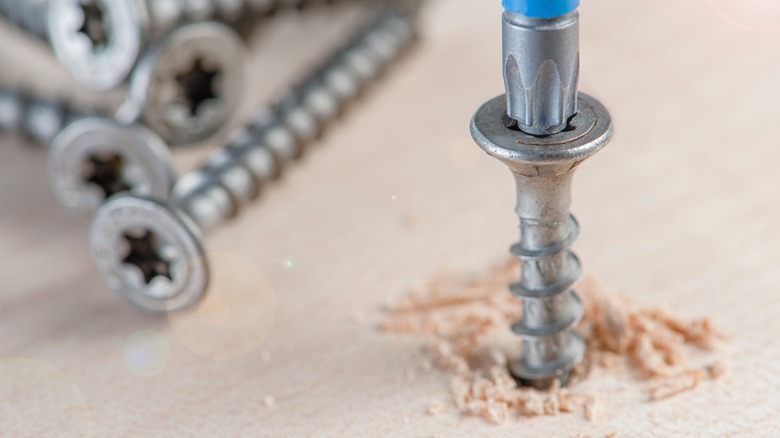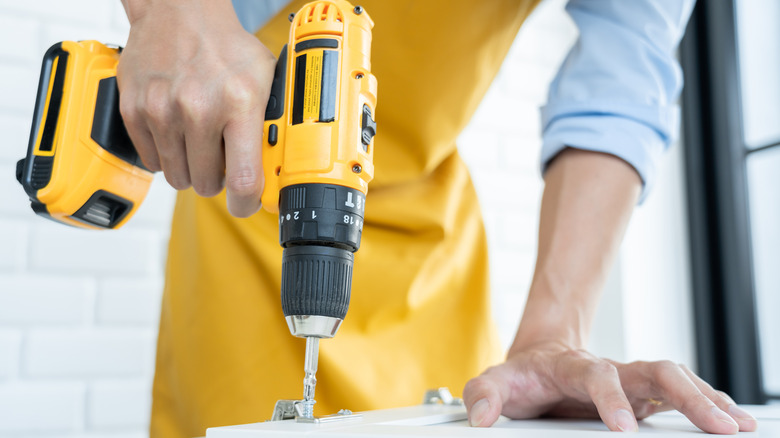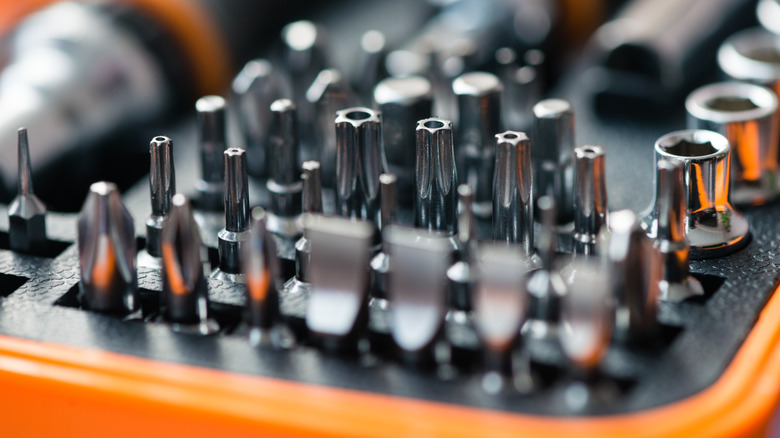The Simplest Way To Avoid Stripping A Screw At Home
Whether you're an avid DIYer working on your home or a skilled tradesperson out on the job, you have used a screw or two in your lifetime. Screws can be used in many fashions to fasten pieces of wood, drywall, metal, plastic, or other materials together. Modern screws, as we know them with their many different types of heads, can be traced back to the early 1900s. Canadian P. L. Robertson invented his version of a square-headed screw in 1908, which was celebrated for its non-slip design and used in the production of Henry Ford's Model T automobiles, according to Thought Co. From there, American Henry Phillips designed the star-headed, or Phillips, screw around 1938. To this day, it remains a standard for modern hardware.
Screws can be made from a variety of different metals to ensure they maintain their integrity. From carbon steel, brass, and nickel, to stainless steel, screws are designed to withstand the elements in order to maintain a firm grip, as per How Products are Made. However, when you are using a screwdriver or power drill to fasten these screws, you likely know of the frustrations involved when you tighten one too much and accidentally strip the head. Stripping a screw means the metal on the head has worn down and lost its ability to grip, which renders a screwdriver useless. Now let's take a look at what is causing you to strip the screw and how you can avoid this.
One simple tip will help you to stop stripping your screws
If you've ever worked on a project that requires plenty of screws, then you may have had your fair share of stripped screw heads. Sometimes when you've tightened a screw all the way, but then gave it one or two more turns right at the end for good measure, this actually caused the bit of your power drill to spin and wear down the head. Or maybe there was too much resistance in the material you were trying to drive a screw into. The overexertion could also cause you to wear out the screw and strip it. Either way, stripping a screw can make it incredibly difficult to remove it when you need to later.
Luckily, there's a simple way to stop this from occurring while properly attaching materials. It all comes down to the pressure you put on your drill or screwdriver. According to Consumer Reports, when drilling or hand driving your screws, you should be working at a 90-degree angle to the screw. Seat the bit snugly into the head of the screw and apply constant firm pressure as you methodically drive the screw into the material at a consistent speed. This way, if the screw faces any resistance, the pressure will keep the screw from being held up which might cause the bit to spin in the screw head, leading to a stripped screw.
How to remove a stripped screw and other ways to prevent it from happening
Looking for more ways to avoid stripping your screws? It's always a good idea to use a brand new driver bit on your power drill. If your bit is worn out, then it won't properly fit into the screw head. A worn-out bit will spin and, instead of catching onto the corners of a new screw, it will rotate and wear out the screw faster, according to All Points Fasteners.
Drilling a pilot hole can also help stop screws from stripping. Using a drill bit that is slightly thinner than the screw you're using will create a clear path and, therefore, limit any resistance the screw may encounter.
Now that you know how to avoid this problem, how can you remove the ones that have already been stripped? One method is to purchase a screw extractor set, which will come in a variety of different sizes to help you remove the screw. You could also try to bang the back of your screwdriver into the screw using a hammer. This works the screwdriver into the head of the screw just enough so you can twist and remove it, according to Insider. Another way to remove a stripped screw is to lay the thick side of a rubber band across the screw head. The rubber band will provide you with some needed grip on the stripped head as you attempt to unscrew it.


